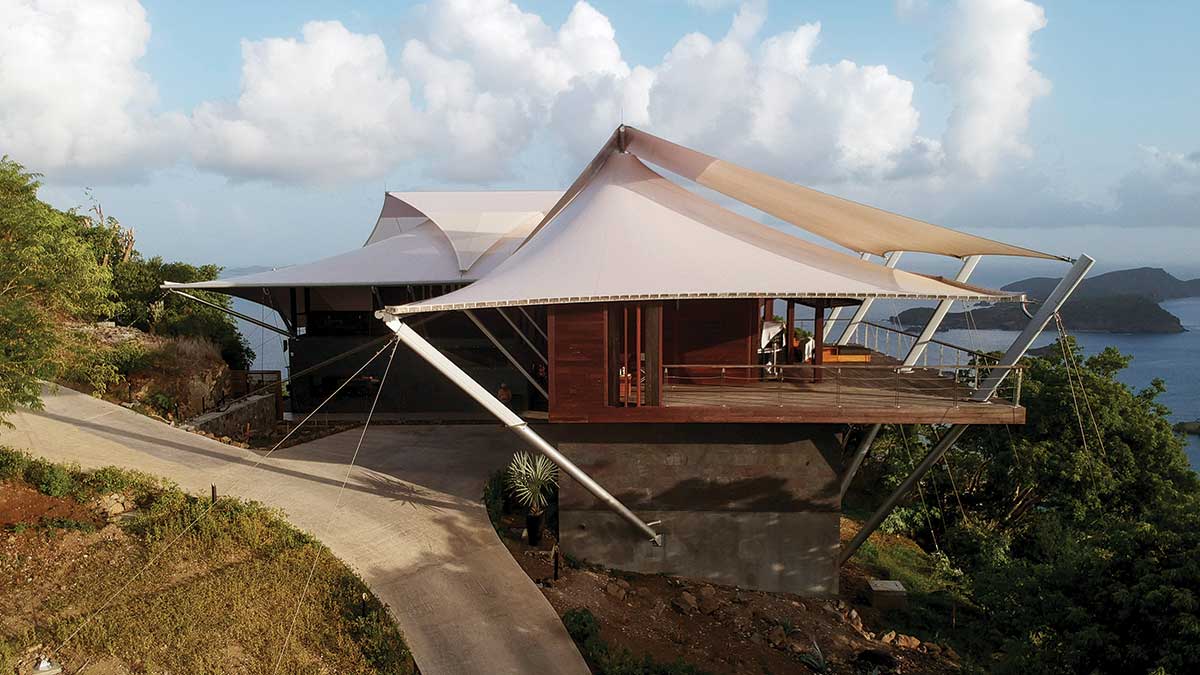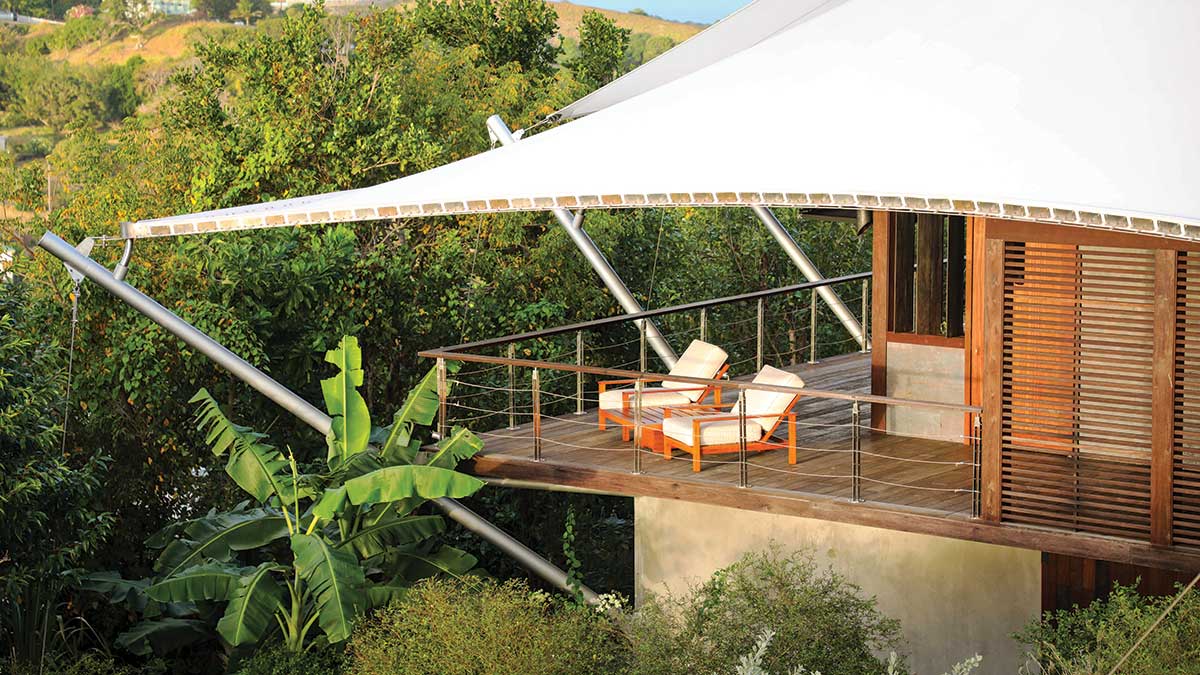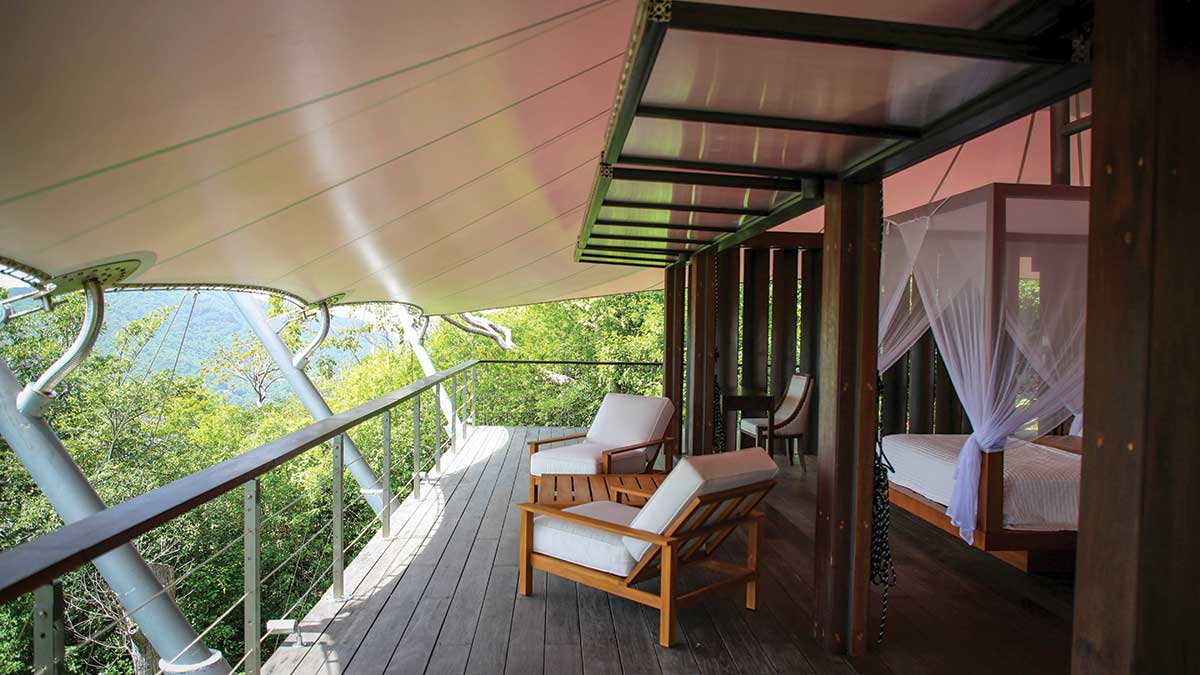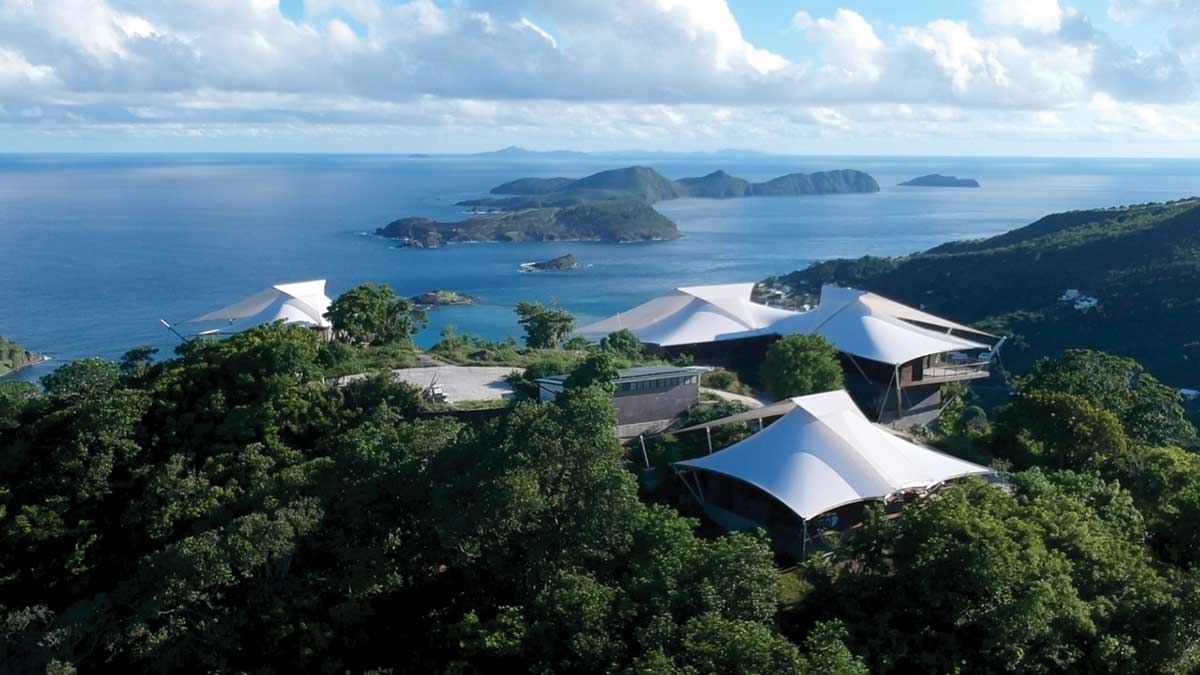
The Sail House is a dappled array of structures, consisting of a primary residence and several guesthouses. According to the architect, the main inspiration for the Sail House was a wooden boat with its masts and sails, the expressed stainless-steel rigging and hardware, which is referenced in the home.
Prefabrication
The buildings were prefabricated and flat-packed to the island in 15 shipping containers. The goal of the shipping process was to maximize density and efficiency with zero waste. The prefabricated structure is set upon a concrete box that acts as a cistern for water collection and anchors the residence to the ground. It allows the aluminium beams to be cantilevered off the base, providing minimal impact on the jungle.

Sustainable Features
Sustainability was one of the main goals of the project. The non-corrosive and termite-resistant aluminium structural system is wrapped in reclaimed ironwood planks recycled from an abandoned pier, as are the plank floors, decks, and the vertical louvers that control low sun and prevailing breezes. Other interior/exterior finishes are panels made of woven palm, coconut shell fragments, and other natural, highly crafted surfaces created by Javanese and Balinese craftsmen.
Sustainable features include storm water collection, reclaimed wood, passive ventilation, and photovoltaic panels. The project generates its own electricity, collects its own water, and provides a genuine indoor/outdoor relationship conducive to the local micro-climate.

Tensile Roofing
The tensile roof membranes provide deep shade and large overhangs from the equatorial sun, not achievable from a typical rigid roof. The roofs create a swooping form designed to collect rainwater and create a thermal chimney to exhaust heat out of the top by maximizing cross ventilation. Collected water in the cisterns in the foundations is used to draw cooler air up through the central mast to cool the house if needed.
Rain and dew that fall on the large roof areas are directed to the stainless-steel clamp plates at the roof edges, collecting and funneling water into the structural aluminium masts and down to the concrete foundations, which dually function as large cisterns that provide 100% water demands for use on the property.

The Sail House was selected as the 2021 Architizer A+Awards Jury Winner for Residential, Private House.
Photo credit: Nicola Cornwell
Source: V2.com















